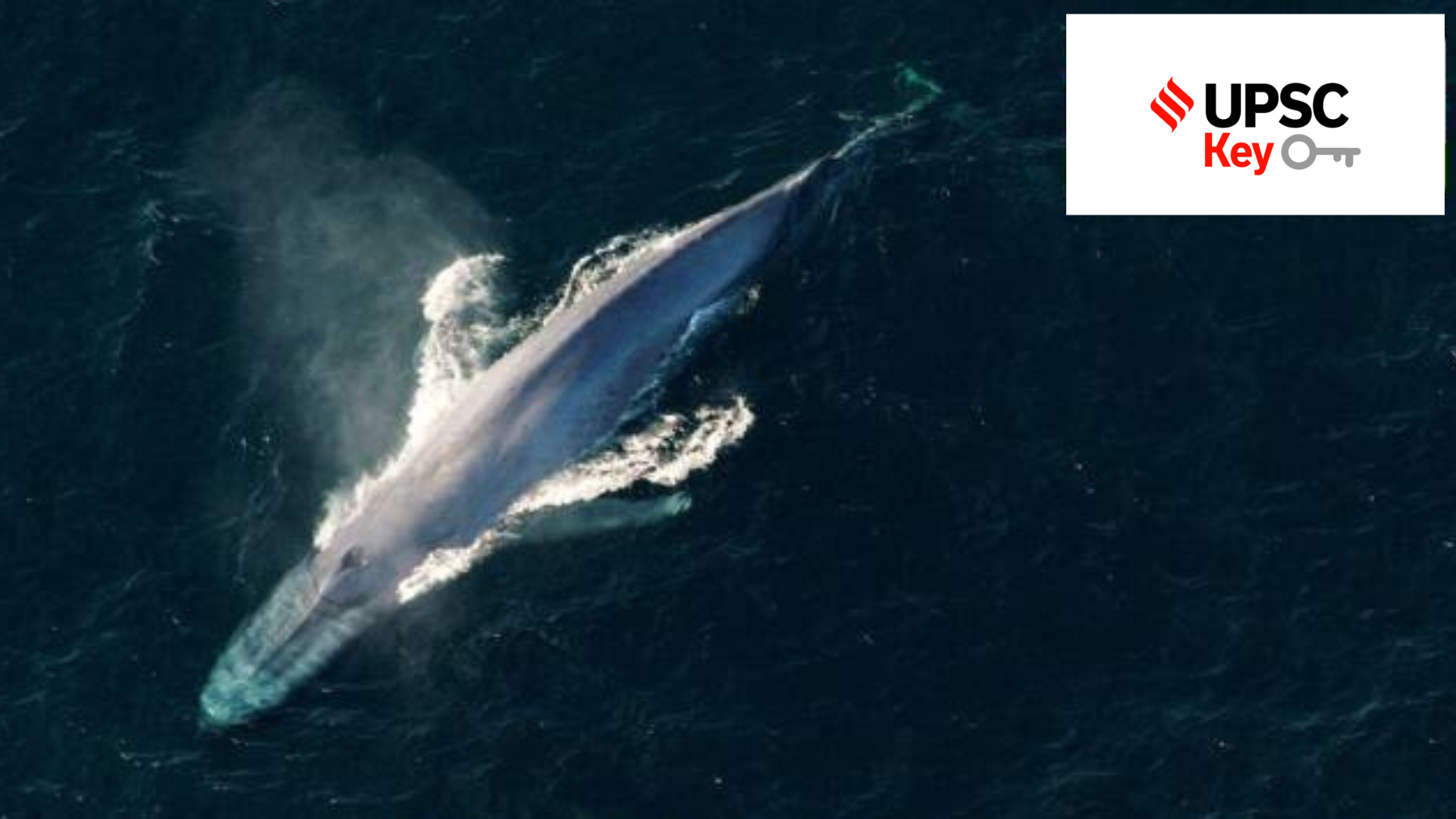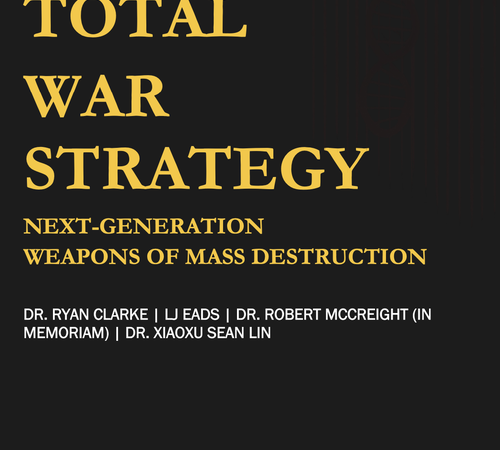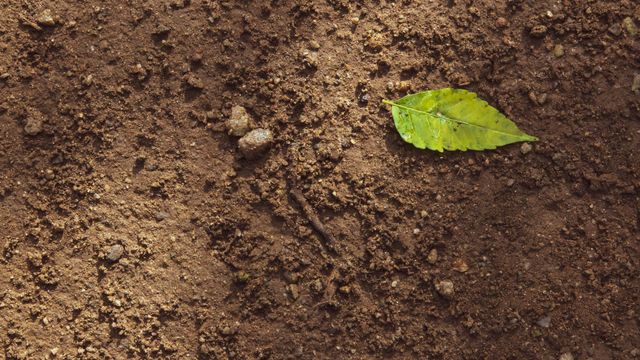UPSC Key- March 23, 2023: Know about Man-Elephant conflict, Tuberculosis, High Seas and Genome and Gene


FRONT PAGE
At Covid-19 review meet, PM stresses on tracking new variants
Syllabus:
Preliminary Examination: General Science and Current events of national and international importance.
Mains Examination:
• General Studies II: Effect of policies and politics of developed and developing countries on India’s interests, Indian diaspora.
• General Studies III: Awareness in the fields of IT, Space, Computers, robotics, nanotechnology, bio-technology.
Key Points to Ponder:
• What’s the ongoing story- PRIME MINISTER Narendra Modi directed officials on Wednesday to enhance whole genome sequencing of the Covid-19 virus to track newer variants and carry out effective monitoring of influenza-like illnesses and severe acute respiratory infections. He also urged people to follow respiratory hygiene and Covid-19 appropriate behaviour, according to a statement issued by the PMO.
• What do you understand by the term ‘Genome’?
• How Genome and Gene differ from each other?
• What is genome sequencing of COVID-19 in India?
• Why is genomic sequencing important?
• How does genomic sequencing work?
• Where does the data for genomic surveillance come from?
• What is influenza with acute respiratory infection?
• What is H3N2 virus in India?
• Some Data and numbers-According to data shared by the Union Health Ministry, more than 1,000 new Covid-19 cases daily were reported on two of the previous three days – March 20 (1,246 cases), March 21 (699 cases) and March 22 (1,134 cases). Till mid-February, less than 1,000 cases were being reported a week. The numbers started rising slowly, reaching 3,000 cases a week by mid-March.
Advertisement
• Data from the ICMR which tracks respiratory infections across its network of viral laboratories – shows that Covid-19 is on the rise-Why sudden spike in cases?
• For Your Information-Data from the ICMR shows that Covid-19 is on the rise. In the first week of March, two of the flu sub-types were found in 81.6% of respiratory samples, while Covid-19 was found in 12.6%. By March second week, flu sub-types were found in 48% of the samples and Covid-19 in 33.3% samples. Along with the increasing cases of Covid-19, a newer sub-variant of the recombinant variant XBB was reported from Maharashtra and Gujarat. There were 40 sequences of XBB1.16 isolated from samples from Maharashtra and 26 sequences from Gujarat.
• What is XBB1.16?
• What are other Covid sub- variants?
• The Indian SARS-CoV-2 Genomics Consortium (INSACOG)-Role, Under which Ministry?
Advertisement
• The Indian SARS-CoV-2 Genomics Consortium (INSACOG) is jointly initiated by whom?
• Do You Know-INSACOG was established in December 2020 as a joint initiative of the Union Health Ministry of Health and Department of Biotechnology (DBT) (under the Ministry of Science and Technology) with the Council for Scientific & Industrial Research (CSIR) and Indian Council of Medical Research (ICMR) to expand the whole-genome sequencing of SARS-CoV-2, the coronavirus that causes the Covid-19 disease, across India with the aim of understanding how the virus spreads and evolves. INSACOG started out with the participation of 10 national research laboratories of the central government, and gradually expanded to a network of 38 labs, including private labs, operating on a hub-and-spoke model. The 10 INSACOG Genome Sequencing Laboratories handhold the new laboratories, and the pan-India consortium works to monitor genomic variations in SARS-CoV-2 by a sentinel sequencing effort which is facilitated by the National Centre for Disease Control (NCDC), involving the Central Surveillance Unit (CSU) under the central government’s Integrated Disease Surveillance Programme (IDSP).
• What Lessons India learnt from Second Wave of Covid-19?
• On the global stage, countries and a range of institutions are negotiating the “pandemic treaty”-What is pandemic treaty?
• What is a variant of interest (VOI)?
• What is a variant of concern (VOC)?
• For Your Information-WHO considers Variants of Interest (VOI) if the SARS-CoV-2 virus (which causes COVID-19) has mutations that are suspected or known to cause significant changes from its original strain is spreading widely in many places or many countries whereas variant of concern (VOC) is a SARS-COV-2 variant which spreads more rapidly, causes more severe disease, change in clinical presentation, escapes the body’s immune response, decrease effectiveness of known public health measures, diagnostics, treatments or vaccines.
Other Important Articles Covering the same topic:
Advertisement
A jumbo mission is in the works to capture a rogue elephant in Kerala
Syllabus:
Preliminary Examination: General issues on Environmental ecology, Bio-diversity and Climate Change
Advertisement
Mains Examination: General Studies III: Conservation, environmental pollution and degradation, environmental impact assessment.
Key Points to Ponder:
• What’s the ongoing story– The Kerala Forest Department has made sweeping arrangements to capture a wild elephant terrorising the high ranges of the Idukki district by killing people and raiding shops for grains for at least the last five years. The elephant, known as Arikomban (rice tusker), a name conferred on the rogue elephant by local people due to its habit of raiding shops for rice) would be tamed in the operation set to begin on March 25 and converted into a kumki (captive tusker used for operations against rogue elephants), said officials.
Advertisement
• What are the major causes of human-Elephant conflict in India?
• What present data on Elephants in India says?
• What are the three types of elephants?
• Is the Asian elephant related to the African elephant?
• What is difference between Asian elephant and African elephant?
• Do you Know-Elephants have defined social structures. Herds of elephants are matriarchies, with the oldest female leading the way. They consist of female family members of any age and male offspring. Pubescent male elephants leave their herds and generally operate in bachelor male herds. Older males are often solitary.
• Have you heard of Project Elephant?
• Map Work-Elephant reserves in India
Other Important Articles Covering the same topic:
📍Understanding Kerala’s man-elephant conflict
Previous Year prelims Questions Based on Similar theme:
📍With reference to Indian elephants, consider the following statements:
1. The leader of an elephant group is female.
2. The maximum gestation period can be 22 months.
3. An elephant can normally go on calving till the age of 40 years only.
4. Among the States in India, the highest elephant population is in Kerala.
Which of the statements given above is/are correct? (Please refer GS1 2020 for complete question)
📍With reference to Indian laws about wildlife protection, consider the following statements:
1. Wild animals are the sole property of the government.
2. When a wild animal is declared protected, such animal is entitled for equal protection whether it is found in protected areas or outside.
3. Apprehension of a protected wild animal becoming a danger to human life is sufficient ground for its capture or killing.
Which of the statements given above is/are correct? (Please refer GS1 2022 for complete question)
GOVT & POLITICS
PM to address ‘One World TB Summit’ in Varanasi tomorrow
Syllabus:
Preliminary Examination: Economic and Social Development
Main Examination: General Studies II: Issues relating to development and management of Social Sector/Services relating to Health, Education, Human Resources.
Key Points to Ponder:
• What’s the ongoing story- Prime Minister Narendra Modi will visit his Lok Sabha constituency Varanasi on Friday to address ‘One World TB Summit’ and also dedicate and lay foundation stones for various projects worth over Rs 1,780 crore, said a Prime Minister’s Office press release. To mark World Tuberculosis Day, the Ministry of Health and Family Welfare (MoHFW) and the Stop TB Partnership are organising the summit where international delegates from over 30 countries are scheduled to be present. Founded in 2001, the Stop TB Partnership is a United Nations-hosted organisation that amplifies the voices of the people, communities and countries affected by TB.
• Health Sector in India-Pre and Post Pandemic
• Tuberculosis (TB) and India-Impact
• India TB Report 2021 and Global TB Report 2021-key Highlights and who publishes?
• Know the term-BCG (Bacillus Calmette-Guerin)
• National Strategic Plan 2017-2025 for TB Elimination in India-Issues and Challenges
Other Important Articles Covering the same topic:
📍National Strategic Plan 2017-2025 for TB Elimination in India
Army to introduce ‘native, traditional’ millets in troop rations
Syllabus:
Preliminary Examination: Economic and Social Development-Sustainable Development, Poverty, Inclusion, Demographics, Social Sector Initiatives, etc.
Mains Examination: General Studies III: Major crops-cropping patterns in various parts of the country, different types of irrigation and irrigation systems storage, transport and marketing of agricultural produce and issues and related constraints; e-technology in the aid of farmers.
Key Points to Ponder:
• What’s the ongoing story-The Army has decided to introduce millets in rations of troops deployed in various locations, including the northern borders, to promote consumption of the indigenous grain in the backdrop of the United Nations General Assembly declaring 2023 as the International Year of Millets, the Army said on Wednesday. “The landmark decision will ensure troops are supplied with native and traditional grains after over half a century, when these were discontinued (in 1966) in favour of wheat flour,” the Army said in a statement.
• What is Millet?
• For Your Information-The word millets is used to describe small-grained cereals like sorghum (jowar), pearl millet (bajra), foxtail millet (kangni/ Italian millet), little millet (kutki), kodo millet, finger millet (ragi/ mandua), proso millet (cheena/ common millet), barnyard millet (sawa/ sanwa/ jhangora), and brown top millet (korale).
• Where millets lag?
• Millets aren’t the first choice either of consumers or of farmers-Why?
• Why 2023 is Year of Millets?
• Can robust cereals like millets offer a cheap and nourishing alternative as the global agrifood systems struggle to feed a population that is constantly expanding?
• How the IYM 2023 will contribute to the 2030 Agenda for Sustainable Development?
• Map Work- The major millet producing states in India
• What geographical parameters are necessary for millets?
• India and Millets-Know in detail
Other Important Articles Covering the same topic:
📍Why India’s push for millets is yet to gain widespread traction
EXPLAINED
Syllabus:
Preliminary Examination: General issues on Environmental ecology, Bio-diversity and Climate Change
Mains Examination: General Studies III: Conservation, environmental pollution and degradation, environmental impact assessment.
Key Points to Ponder:
• What’s the ongoing story– Two weeks ago, negotiators from almost every country in the world finalised a new global treaty meant for the conservation and sustainable use of biological resources in the high seas. In terms of its significance and impact, this treaty is being compared to the 2015 Paris Agreement on climate change. High seas are open ocean areas that are outside the jurisdiction of any country — the reason why the treaty is commonly known as the agreement on “biodiversity beyond national jurisdictions”, or BBNJ. Once the treaty becomes international law after ratification by member countries, it will regulate all human activities in the high seas with the objective of ensuring that ocean resources, including biodiversity, are utilised in a sustainable manner, and their benefits are shared equitably among countries.
• What are the high seas?
• Which marine species are at risk?
• How will the High Seas Treaty protect marine life?
• When will the treaty take effect?
• “Oceans are an integral part of the global climate cycle, and perform a range of ecological services” -Discuss
• For Your Information-The high seas comprise 64 per cent of the ocean surface, and about 43 per cent of the Earth. These areas are home to about 2.2 million marine species and up to a trillion different kinds of microorganisms, according to the Deep Ocean Stewardship Initiative (DOSI), a network of global experts on oceans. A number of regional, multilateral and global legal frameworks exist to govern the activities in the oceans, the most important of which is the United Nations Convention on the Laws of the Sea (UNCLOS), a 1982 agreement that has near-universal acceptance.
• United Nations Convention on the Law of the Sea-Know in detail
• What is the purpose of the United Nations Convention on the Law of the Sea (UNCLOS)?
• Do You Know-A number of regional, multilateral and global legal frameworks exist to govern the activities in the oceans, the most important of which is the United Nations Convention on the Laws of the Sea (UNCLOS), a 1982 agreement that has near-universal acceptance. Among other things, UNCLOS defined the rights and duties of countries in the oceans, the extent of ocean areas over which countries could claim sovereignty, and the legal status of marine resources. It also specified a set of general rules for a range of activities in the oceans including navigation, scientific research, and deep-sea mining.
• What is exclusive economic zones (EEZ)?
• The high seas are the areas within the EEZ of any country-True or False?
• The High Seas Treaty has four main objectives-What are they?
• Some significant problems are not sufficiently addressed by the treaty-What are they?
Other Important Articles Covering the same topic:
📍Protecting ‘two-thirds of the world’s oceans’: What the UN High Seas Treaty draft agreement says
Previous Year prelims Questions Based on Similar theme:
📍With reference to ‘dugong’, a mammal found in India, which of the following statements is/are correct?
1. It is a herbivorous marine animal.
2. It is found along the entire coast of India.
3. It is given legal protection under Schedule I of the Wildlife (Protection) Act, 1972. (Please refer GS1 2015 for complete question)
THE WORLD
China’s capital experiences first population decline since 2003
Syllabus:
Preliminary Examination: Economic and Social Development
Mains Examination:
• General Studies I: Population and associated issues
• General Studies II: India and its neighbourhood- relations.
Key Points to Ponder:
• What’s the ongoing story- The death rate in China’s capital Beijing surpassed its birth rate in 2022, official data showed on Tuesday, pushing its natural population growth into negative territory for the first time since 2003. The death rate in the city of 21.84 million, one of the country’s most populous urban centres, rose to 5.72 deaths per 1,000 people, while the birth rate fell to 5.67 births per 1,000 people, official statistics released by the Beijing government showed.
• What is Birth rate and death rate?
• What happens when birth rate is greater than death rate?
• What happens when death rate is greater than birth rate?
• Beijing’s population decline was in line with national trends, with China’s population falling last year for the first time in six decades- There are two primary drivers of population change-what are they?
• How Mortality and fertility impacts population ratio?
• For Your Information-A country’s population increases with reduction in mortality or relative number of deaths. The population growth slows and may even go into reverse, like it has now for China with declining fertility rates. Mortality falls with increased education levels, public health and vaccination programmes, access to food and medical care, and provision of safe drinking water and sanitation facilities.
• What is crude death rate (CDR) and the total fertility rate (TFR)?
• If India’s TFR is already below-replacement, why is its population still increasing?
• How has China’s TFR finally shrunk?
• What does Total Fertility Rate (TFR) of 2.1 mean?
• What National Family Health Survey 5 said about Total Fertility Rate (TFR)?
• What is Replacement Fertility Rate?
• How is the Total Fertility Rate calculated?
• What is the difference between birth rate and Total Fertility Rate (TFR)?
• Does an increase in births mean that TFR will go up?
• Why China faces a crisis?
• How can this entire situation be viewed as an opportunity for India?
• Do You Know-According to the 2022 edition of the United Nations’ World Population Prospects (WPP), released recently, India is projected to surpass China as the world’s most populous country in 2023. It also projected the world’s population to reach 8 billion on November 15, 2022. World Population Prospects 2022 is the twenty-seventh edition of the official estimates and projections of the global population that have been published by the United Nations since 1951.
• World Population Prospects 2022- What are the main takeaways for the global population?
• According to the World Population Prospects 2022, Population growth is caused in part by declining levels of mortality, as reflected in increased levels of life expectancy at birth-true or false?
• According to the World Population Prospects 2022, International migration is having important impacts on population trends for some countries. How?
• The size of the population is intimately connected to the power dynamics shaping the relationship between nations, regions and generations-Do you agree with the given statement?
• What is ‘Demographic gravitation’?
• Can you highlight population transformations around the globe?
• What is demographic dividend?
• The UN projections say that by 2050, India’s population will reach 1,668 million, far exceeding China’s declining population at 1,317 million. What will be its implications?
• What pattern of population distribution is in China?
• What are the policy implications arising out of these two trends?
Other Important Articles Covering the same topic:
📍China sees population dip after decades
For any queries and feedback, contact priya.shukla@indianexpress.com
The Indian Express UPSC Hub is now on Telegram. Click here to join our channel and stay updated with the latest Updates.



